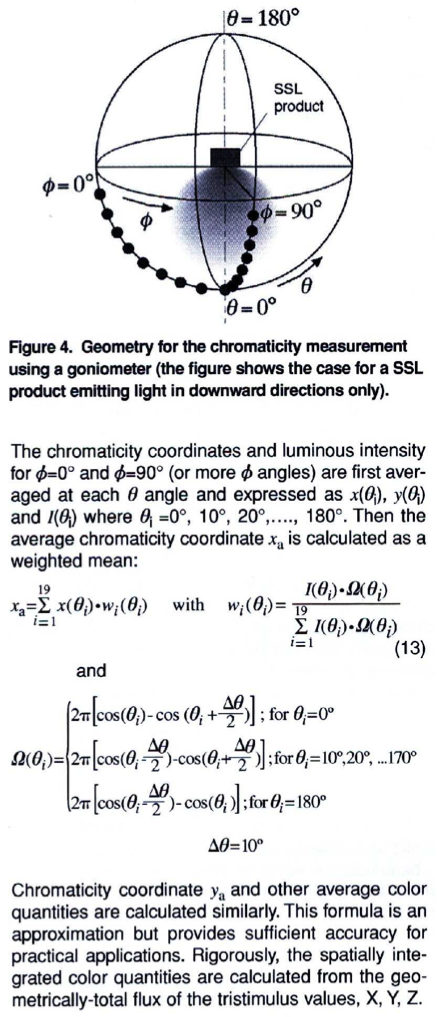Non-visual effects of ocular light on human beings – The biological factors
Posted by Marcel van der Steen in Explanation 2 Comments» This article explains a bit about the biological effects of light on human beings. It appears that next to rod and cones there are other cells sensitive to a certain part of the light spectrum and that influences our daily rhythm (circadian cycle); this is the cycle of sleep and being awake, where a hormone like melatonin plays an important role.
This article explains a bit about the biological effects of light on human beings. It appears that next to rod and cones there are other cells sensitive to a certain part of the light spectrum and that influences our daily rhythm (circadian cycle); this is the cycle of sleep and being awake, where a hormone like melatonin plays an important role.
The spectrum of the light enables to compute the biological effect that it can provoke, amongst others in (1) the suppression of melatonin in the night and in (2) shifting the circadian phase. I used the vornorm DIN V 5031-100:2009-06 as the basis of the computation of several interesing parameters coming from the light spectrum.
Biological factors
The mentioned vornorm explains about the biological factors that can be computed from the spectrum of the light. As OliNo measures the spectrum, also for different inclination angles, it can compute the biological factors for the light. Factors such as
(1) melatonin suppression during the night (ms),
(2) changing the circadian phase (cp),
(3) changing the circadian amplitude (ca),
(4) activate with light (activating the awakeness) (ak).
Biological effect factor
The most important factor is the biological effect factor, this relates the biologic quantity to the corresponding visual quantity. In equation:
Instead of “biol” one can read “ms”, “cp”, “ca”, “ak”.
The mentioned variables and their meaning:
Xλ(λ) = a spectral radiometric quantity, OliNo will use Irrandance in [W/m2/nm]
sbiol(λ) = the relative spectral sensitivity of radiation (also called actionspectrum)
V(λ) = the human eye daylight sensitivity function (photopic sensitivity function)
This factor is valid for people of 25 years old.
As OliNo uses a photogoniometer and not a sphere, the determination of the value abiol needs to be done by taking spectral measurements in diverse inclination angles. Then weighing these found values with the Ev value measured at that angle and weighing these values also with the area at that inclination angle. This calculation technique is explained in LM79-08 and is done for quantities as CCT, x, y and CRI.
Correctionsfactor for age
For increasing age this biological effect factor needs to be adjusted. There are two effects:
kbiol trans(A) = age dependent correction factor for the clouding of the eye media
kpupil(A) = age dependent correction factor for the decrease of pupil size
The kbiol trans(A) depends on age as well as on wavelength λ. The equation can be found in the vornorm. It shows a decrease in value for mainly the short wavelengths of light (blue hues) when age increases.
The kpupil depends on age and on adaptation luminance. This latter is taken to be a constant value equivalent to many normal cases. The kpupil decreases when age increases.
The result on an increasing age is that the biological effect of the light decreases when age increases. However when age increases the blue sensitivity also decreases and this results in less effective lumen perceived from the lamp (depending on the amount of blue light in the spectrum of the light of the lamp observed). Which factor decreases most is dependent on the spectrum of the lamp.
Examples of biological factors
The vornorm gives a number of examples of lamps or light sources and their biological effect factor. Some examples:
| light source type | abiol v | kbiol trans(25) | kbiol trans(50) | kbiol trans(75) |
|---|---|---|---|---|
| Incand. light bulb (T=2856 K, illuminant A) | 0.376 | 1.000 | 0.773 | 0.527 |
| Sunlight (illuminant B) | 0.759 | 1.000 | 0.741 | 0.473 |
| Natural daylight (illuminant D65) | 0.941 | 1.000 | 0.732 | 0.461 |
| Daylight T=7500 K (illuminant D675) | 1.040 | 1.000 | 0.727 | 0.453 |
| Fluorescent F12 (3000K) | 0.342 | 1.000 | 0.733 | 0.468 |
| LED white (3000K) | 0.341 | 1.000 | 0.768 | 0.511 |
| Fluorescent F10 (5000K) | 0.654 | 1.000 | 0.724 | 0.446 |
| LED white (5500K) | 0.740 | 1.000 | 0.745 | 0.470 |
| Candle light (illuminant P) | 0.167 | 1.000 | 0.811 | 0.590 |
| Xenon light (illuminant Xe) | 0.918 | 1.000 | 0.731 | 0.459 |
Good or bad?
When a lamp has a relatively high value for its biological factor (towards value 1) then that means that its light (when its level in illuminance [lx] is high enough (not too low) is capable of provoking the effects mentioned in (1) to (4) as explained in chapter Biological factors.
Such light is capable of replacing sunlight and can work well during the day for illuminating workspots that do not have much daylight due to their location in a building.
Such light applied during the late hours of the day (or at night) will also effectively suppress melatonin levels which means that the human daily rhythm is out of sync with the normal day-night rhythm. Howver this light will help keeping the people being alert during their work.
Measurement data
OliNo will report these values abiol v and kbiol trans (25), (50) and (75) for new to be measured lamps.







2 replies on “Non-visual effects of ocular light on human beings – The biological factors”
I have read your article. And I am very interested in studying biology. I hope to write articles about science. Greetings. Thank you: D
Thank you for this great study ! It has been very helpful to me to help me choose the best light for my home.